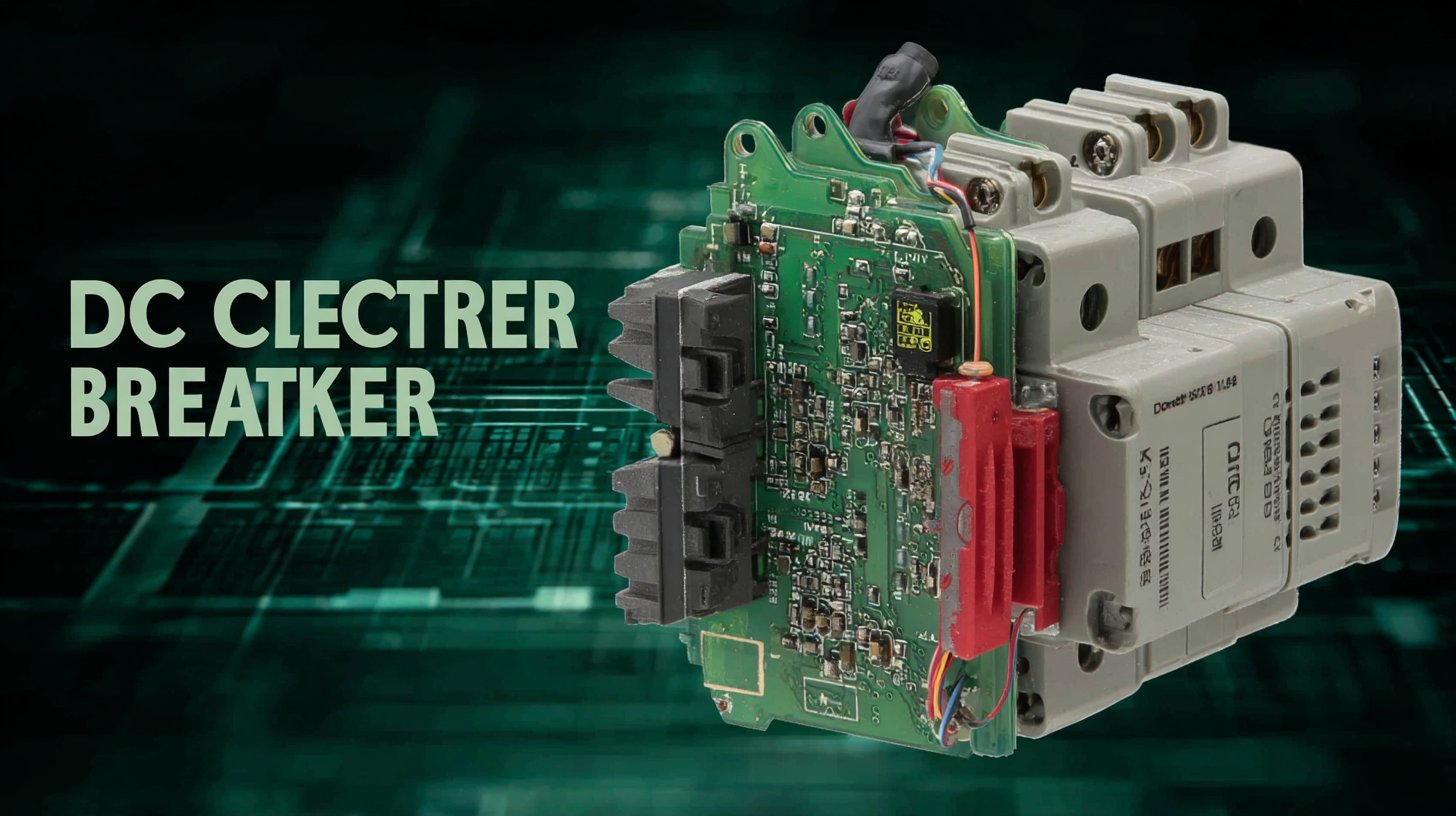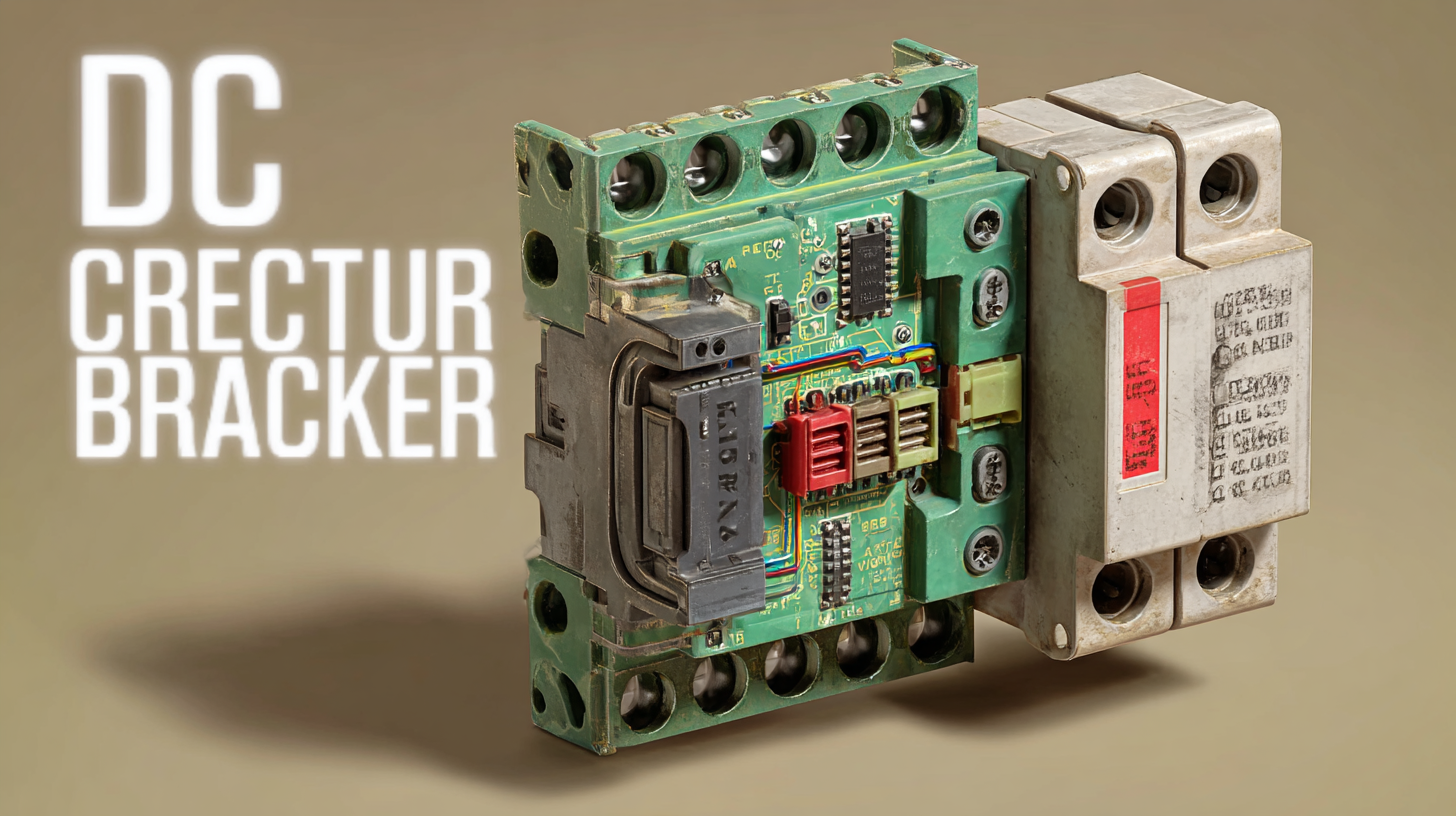
Step-by-Step Guide to Selecting the Best DC Circuit Breaker for Your Needs
The global demand for reliable electrical protection systems has surged, leading to the increasing importance of selecting the right DC Circuit Breaker. According to a recent industry report, the market for circuit protection devices is projected to reach $xx billion by 2025, with a compound annual growth rate (CAGR) of xx%. This growth is primarily driven by the rising adoption of renewable energy sources and electric vehicles, which necessitate robust protection against overcurrent conditions in direct current (DC) applications. However, the multitude of choices available can be overwhelming for users. Therefore, understanding the critical factors involved in selecting the optimal DC Circuit Breaker tailored to specific requirements is essential for achieving safety, efficiency, and long-term reliability in electrical systems. This guide aims to provide a comprehensive, step-by-step approach to assist you in making an informed decision regarding DC Circuit Breakers amidst a rapidly evolving market landscape.

Understanding DC Circuit Breakers: What You Need to Know
DC circuit breakers are essential components in modern electrical systems, protecting circuits from overloads and short circuits. Unlike their AC counterparts, DC circuit breakers must be designed to handle constant current flow in one direction, which can be more challenging. According to a report by Research and Markets, the global demand for DC circuit breakers is expected to grow significantly, driven by the increasing use of renewable energy sources and electric vehicles. This surge in demand underscores the importance of understanding the different types and their applications.
When selecting a DC circuit breaker, consider the voltage and current ratings that match your system requirements. For instance, photovoltaic (PV) systems typically require breakers that can manage higher voltages, while smaller applications may need less robust options. It's crucial to consult the manufacturer's specifications and guidelines to ensure optimal performance.
Tip: Always prioritize temperature ratings and environmental conditions when choosing your breaker, as these factors directly impact the performance and life span of the device.
Another vital aspect is compatibility with existing systems. You'll want to ensure that the breaker connects seamlessly with other components. Consider investing in modular breakers, which provide flexibility for expandability in future upgrades—an increasingly important feature as technology evolves.
Tip: Conduct regular maintenance checks to ensure your DC circuit breaker functions correctly, as regular wear can affect its performance and reliability.
Key Factors to Consider When Choosing a DC Circuit Breaker
When selecting the best DC circuit breaker for your specific needs, there are several key factors to consider. First and foremost, you should evaluate the voltage and current ratings of the circuit breaker. Ensure that the ratings meet or exceed your system requirements to prevent potential overloads or failures. Additionally, consider the application of the circuit breaker—whether it will be used in solar power systems, electric vehicles, or other DC applications. Each application may demand different specifications and performance features.
Another critical factor is the breaking capacity of the circuit breaker, which indicates its ability to interrupt fault currents safely. Higher breaking capacities are essential for systems that may experience significant fault levels. You should also look into the operational features, such as manual resetting capabilities and response times, which can influence the ease of use and safety of your installation. Finally, don’t forget to consider the manufacturer’s reputation and warranty offers, as these can provide insight into the reliability and longevity of the product you are choosing.
Types of DC Circuit Breakers: Which One is Right for You?
When it comes to choosing the right DC circuit breaker, understanding the various types available is crucial. DC circuit breakers can generally be categorized into two main types: thermal and magnetic breakers. Thermal breakers are designed to protect against overloads by using a bimetallic strip that bends when heated, thus tripping the circuit. This type is ideal for applications where there are steady loads that could potentially exceed the rated capacity. On the other hand, magnetic circuit breakers use an electromagnetic coil to trip the breaker immediately in the event of a short circuit, making them essential for environments where rapid response is necessary.
Another category worth considering is the DC rated circuit breaker versus the AC rated counterpart. DC rated breakers are specifically designed to interrupt direct current safely and efficiently. They feature specialized characteristics to handle the unique challenges posed by DC, such as the need for arc extinguishing capability. When selecting a circuit breaker, it's important to assess the specific requirements of your system, including voltage levels, load characteristics, and operational environments. With the right type in mind, you can ensure optimal protection and reliability for your DC electrical systems.
Step-by-Step Guide to Selecting the Best DC Circuit Breaker for Your Needs
| Circuit Breaker Type | Voltage Rating (V) | Current Rating (A) | Trip Sensitivity | Application |
|---|---|---|---|---|
| Miniature Circuit Breaker (MCB) | 12V, 24V, 48V | 1A - 63A | B, C, D curves | General load protection |
| Earth Leakage Circuit Breaker (ELCB) | 12V, 24V | 10A - 100A | 30mA, 100mA | Safety against earth faults |
| Hydraulic Magnetic Circuit Breaker | 12V, 24V, 48V | 5A - 250A | Fixed and adjustable | Heavy machinery, industrial applications |
| Solid State Circuit Breaker | 12V, 24V, 48V | 10A - 400A | Adjustable | Aerospace, electric vehicles |
Installation and Maintenance Tips for Optimal Circuit Breaker Performance
When selecting a DC circuit breaker, understanding installation and maintenance is crucial for ensuring optimal performance. According to recent industry reports, improperly installed breakers can lead to a 30% increase in electrical failures. To avoid these pitfalls, start with a thorough understanding of the installation environment—ensuring that the breaker is rated for the specific voltage and current requirements of your system. The National Electrical Manufacturers Association (NEMA) recommends guidelines to ensure proper alignment and secure mounting, which contributes to the longevity of the breaker.
Maintenance is equally vital; regular inspections can identify potential issues before they escalate. A study by the Electric Power Research Institute (EPRI) highlighted that routine maintenance on circuit breakers can extend their lifespan by 50%. This includes checking for signs of wear, ensuring that connections are tight, and cleaning terminals to prevent corrosion. Implementing a stringent maintenance schedule not only protects your investment but also enhances the reliability of your circuit protection, allowing for safe and efficient operations in your electrical systems.

Regulatory Standards and Safety Considerations for DC Circuit Breakers
When selecting a DC circuit breaker, understanding the regulatory standards and safety considerations is crucial to ensuring both compliance and effective operation. The International Electrotechnical Commission (IEC) sets the benchmark, particularly IEC 60947-2, which outlines the performance requirements specific to circuit breakers used in DC applications. According to a recent market analysis by Mordor Intelligence, the global DC circuit breaker market is projected to grow at a compound annual growth rate (CAGR) of roughly 6.5% through 2025, emphasizing the expanding importance of safety regulations in electrical systems.
Safety considerations go beyond merely adhering to regulations. DC circuit breakers are designed to interrupt fault currents effectively, which can be significantly higher in DC systems compared to their AC counterparts. Data from the Electric Power Research Institute emphasizes that the risk of arcing in DC systems poses a substantial challenge due to the continuous nature of DC current. Therefore, selecting a breaker that not only meets regulatory standards but also incorporates advanced arc suppression technologies can significantly enhance system reliability and safety, mitigating potential hazards before they escalate.

